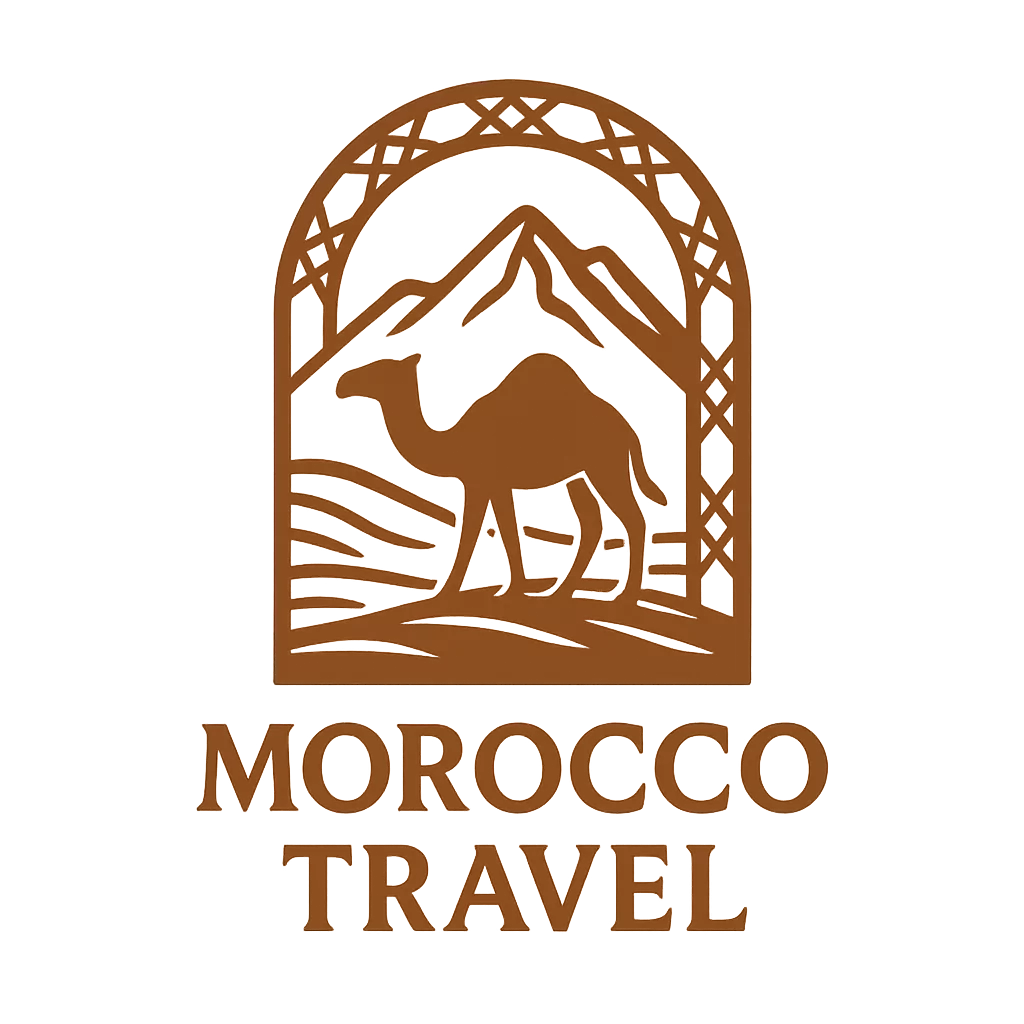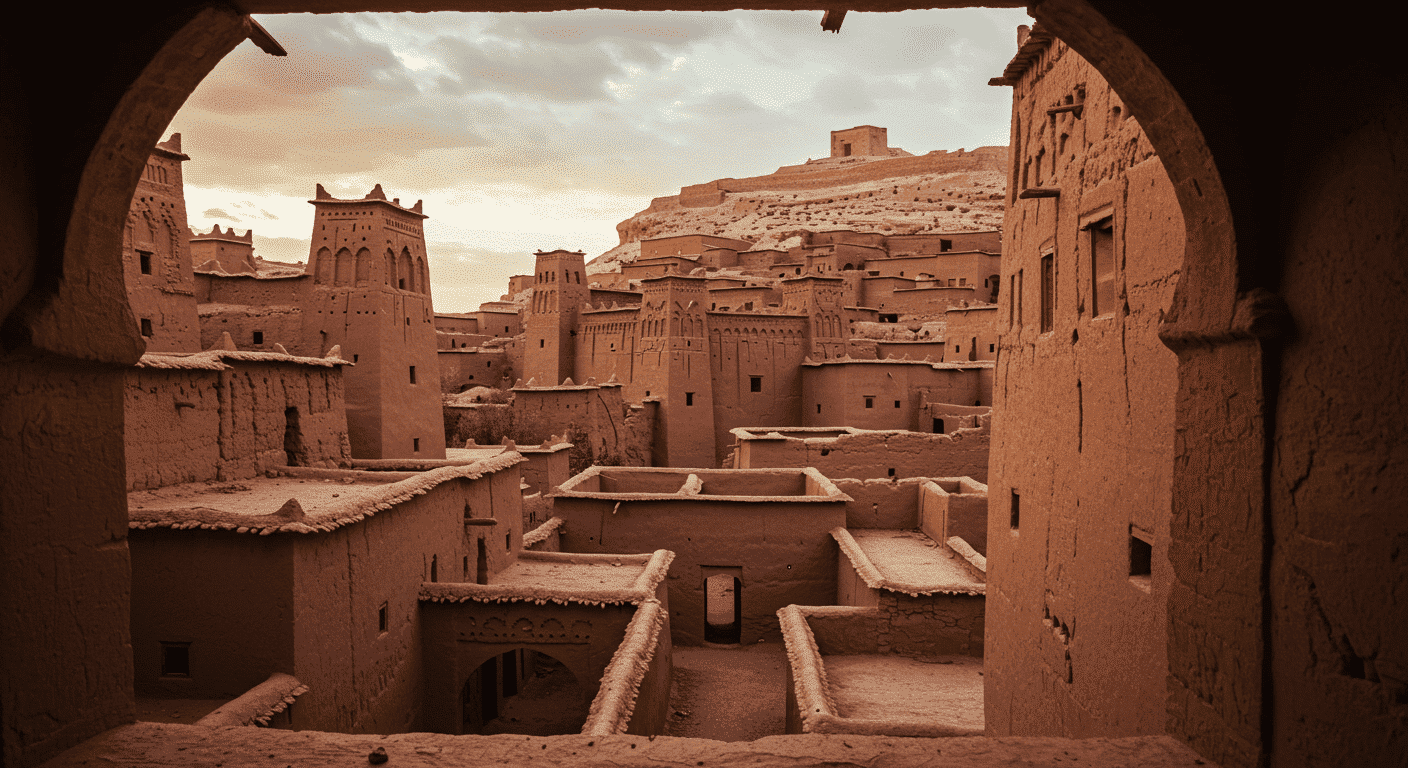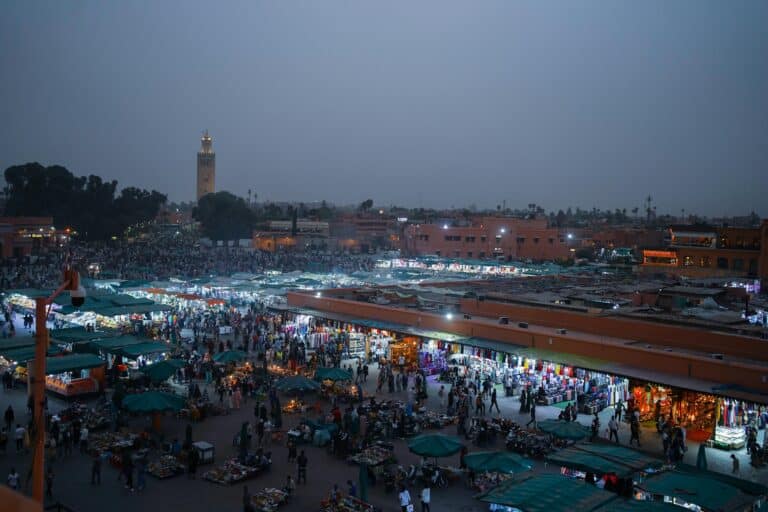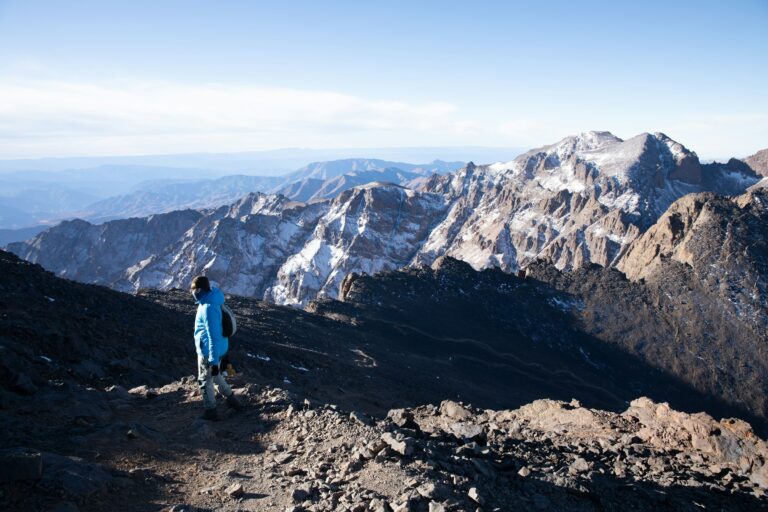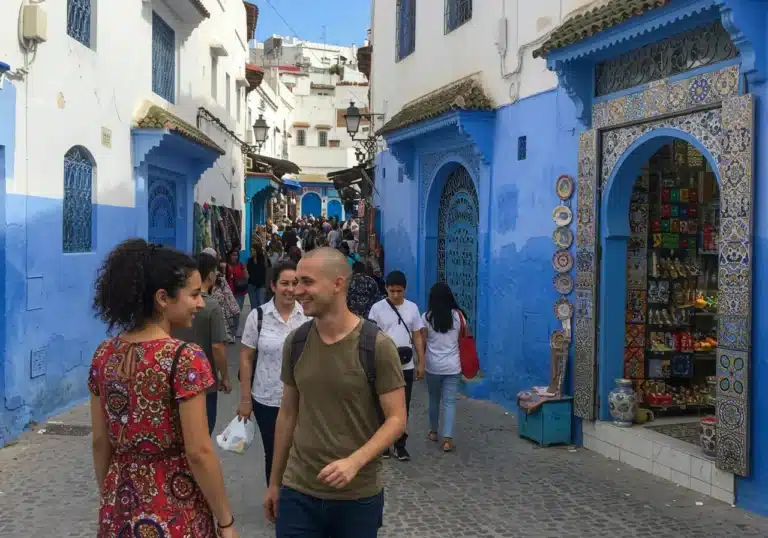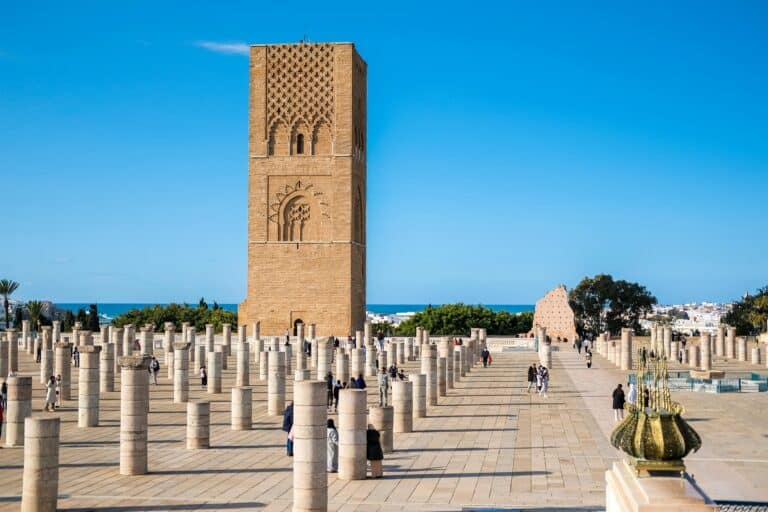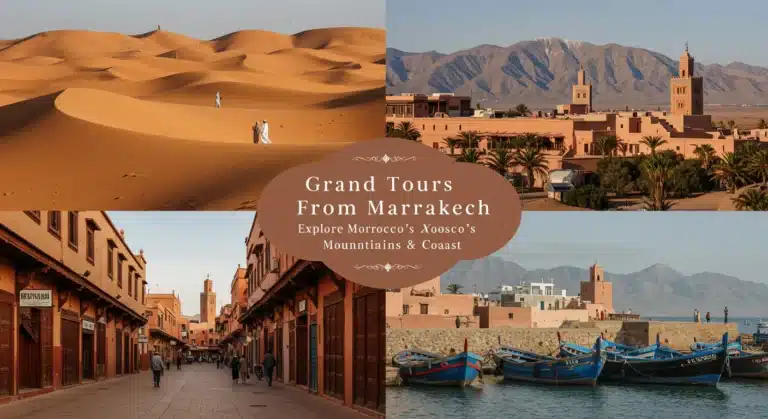Ait Ben Haddou: Morocco’s Ancient Desert Fortress
Ever wondered where filmmakers go when they need an authentic ancient desert fortress that looks straight out of a time capsule? The answer lies in the rustic clay walls of Ait Ben Haddou, Morocco’s most iconic ksar (fortified village) that has captivated travelers and Hollywood directors alike for decades. This UNESCO World Heritage site isn’t just a backdrop for blockbusters like Gladiator and Game of Thrones; it’s a living museum where Berber culture and architecture have remained largely unchanged for centuries. Walking through Ait Ben Haddou feels like stepping through a portal to another era, where the modern world fades away and the romance of ancient Moroccan desert life unfolds before your eyes.
Travel Checklist / What to Pack
Preparing for your journey to Ait Ben Haddou requires thoughtful packing to ensure comfort while exploring this desert gem. Here’s what you’ll need:
Essential Clothing:
- Lightweight, breathable fabrics for daytime (temperatures can exceed 100°F/38°C in summer)
- Long-sleeved shirts and pants (for sun protection and cultural sensitivity)
- Warm layers for evening (desert temperatures drop significantly after sunset)
- Comfortable walking shoes with good grip (the ksar has uneven, sometimes steep pathways)
- Wide-brimmed hat or scarf (essential for sun protection)
- Sunglasses with UV protection
Documentation:
- Passport with at least 6 months validity
- Moroccan visa (if required for your nationality)
- Travel insurance documents
- Printed accommodation confirmations
- International driving permit (if renting a car)
Tech & Photography:
- Camera with extra memory cards (Ait Ben Haddou is incredibly photogenic)
- Portable charger/power bank (electricity can be limited within the ksar)
- Universal adapter (Morocco uses type C and E plugs)
- Offline maps app with the region downloaded
Health & Comfort:
- High SPF sunscreen (reapply frequently)
- Insect repellent
- Hand sanitizer and wet wipes
- Reusable water bottle (stay hydrated in the desert climate)
- Basic first aid kit with common medications
- Electrolyte packets (for hot days)
Pro Tip: Pack a small daypack for exploring Ait Ben Haddou that can hold water, snacks, camera, and sun protection. The traditional buildings trap heat, so having essentials on hand keeps you comfortable during longer explorations.
Best Time to Visit
Timing your visit to Ait Ben Haddou can significantly impact your experience, affecting everything from comfort to crowd levels and photographic opportunities.
Spring (March to May): Perhaps the ideal season to visit Ait Ben Haddou, with pleasant temperatures averaging 70-85°F (21-29°C). The landscape features blooming wildflowers, and visitor numbers are approximately 40% lower than peak summer months. The soft spring light creates perfect photography conditions, especially during the golden hour.
Fall (September to November): Another excellent choice with similar temperature ranges to spring and crowd levels approximately 35% lower than summer. The post-summer clarity offers exceptional visibility of the Atlas Mountains in the distance.
Winter (December to February): Daytime temperatures remain comfortable at 60-70°F (15-21°C), but nights can drop to near freezing. Tourist numbers are at their lowest (65% fewer visitors than summer), providing a more authentic experience. Occasional rainfall may occur, turning the normally dusty terrain briefly green.
Summer (June to August): The hottest period with temperatures regularly exceeding 100°F (38°C). Despite the heat, this is peak tourist season with the highest visitor counts. Early morning (before 9am) or late afternoon (after 4pm) explorations are recommended to avoid the scorching midday sun.
Photography Insight: Visit during late afternoon in fall or winter when the setting sun bathes the earthen structures in a warm golden glow, creating the most dramatic and photogenic lighting conditions for capturing Ait Ben Haddou’s ancient beauty.
Step-by-Step Itinerary
Day 1: Arrival and First Impressions
Start your Ait Ben Haddou adventure with a thoughtful introduction to this remarkable site.
Morning: Most travelers arrive from Marrakech (a 4-hour drive) or Ouarzazate (a 30-minute drive). If coming from Marrakech, depart early (around 7am) to cross the spectacular Tizi n’Tichka pass in the Atlas Mountains during optimal daylight hours.
Afternoon: Check into your accommodation in Ouarzazate or one of the small guesthouses (riads) near Ait Ben Haddou. Rest and acclimatize to the desert environment.
Evening: Experience your first view of Ait Ben Haddou from the modern village across the river. This distant perspective reveals the ksar’s full dramatic silhouette against the setting sun. Enjoy dinner at a local restaurant overlooking the ancient city – try a traditional Moroccan tagine while watching the fortress glow in the sunset.
Day 2: Exploring Ait Ben Haddou
Early Morning (7-9am): Cross the river to Ait Ben Haddou before the tour buses arrive. During summer months, the river may be dry and easily walkable; in winter, use the stepping stones or small bridges. Entering early grants you quiet exploration time and beautiful morning light for photos.
Mid-Morning: Begin your ascent through the ksar’s narrow alleys and stairways. Visit the old granary storehouses, traditional Berber homes, and small craft shops where local artisans create and sell intricate paintings using saffron and indigo dyes. Take note of the traditional earth architecture techniques that have kept these buildings standing for centuries.
Lunch: Enjoy a meal at one of the small cafes within the lower part of the ksar. The rooftop terraces offer spectacular views while you sample local specialties like beef or lamb tagine with preserved lemons and olives.
Afternoon: Continue to the summit of Ait Ben Haddou where an ancient collective granary (agadir) stands. From this vantage point, appreciate panoramic views of the surrounding desert landscape and the Ounila River valley. This is where many famous film scenes were shot, including moments from Gladiator and Kingdom of Heaven.
Evening: Return to your accommodation for rest, then venture out for dinner in the new village, where restaurants often feature live Berber music and traditional atmosphere.
Day 3: Beyond Ait Ben Haddou
Morning: Visit the nearby Atlas Film Studios in Ouarzazate (30-minute drive), often called “Ouallywood.” This working studio contains sets from many films shot in the region, including parts of Ait Ben Haddou replicas used for destructive scenes filmmakers couldn’t shoot at the protected heritage site.
Afternoon: Take a scenic drive along the Road of a Thousand Kasbahs, stopping at interesting sites like Tamdaght Kasbah (7km from Ait Ben Haddou). This less-visited fortress offers a glimpse into what Ait Ben Haddou might have looked like before restoration and tourism.
Evening: Return to Ait Ben Haddou for a final sunset viewing, perhaps from a different angle than your first evening. Many photographers prefer the hill opposite the ksar for capturing the full reflection of the fortress in the river (if water is present).
Budget Breakdown
Planning your Ait Ben Haddou adventure requires understanding the costs involved. Here’s a comprehensive breakdown to help you budget effectively:
Transportation:
- Flight to Marrakech: $400-800 (round trip from major European cities)
- Private taxi from Marrakech to Ait Ben Haddou: $80-100 one way
- Shared grand taxi: $15-20 per person
- Day tour from Marrakech (including transportation): $40-60
- Car rental: $30-50 per day (plus fuel)
Accommodation:
- Budget guesthouse near Ait Ben Haddou: $25-40 per night
- Mid-range riad with traditional décor: $50-80 per night
- Luxury kasbah-style hotel: $120-200+ per night
Food & Dining:
- Simple meal at local café: $5-8
- Traditional Moroccan dinner at mid-range restaurant: $10-15
- Upscale dining experience: $25-40
- Bottled water (1.5L): $0.80-1
- Mint tea at café: $1-2
Activities & Entrance Fees:
- Entrance to Ait Ben Haddou: $2-3 per person
- Local guide for Ait Ben Haddou (highly recommended): $15-25 for 2-3 hours
- Atlas Film Studios tour: $10-12
- Camel ride near Ait Ben Haddou: $15-20 per hour
Shopping & Souvenirs:
- Small traditional painting: $5-15
- Handcrafted Berber jewelry: $10-30
- Woven textiles: $20-50
- Leather goods: $15-40
Insider Savings:
- Visit during shoulder season (March-May or September-November) for 15-20% lower accommodation rates
- Stay in nearby Ouarzazate for more accommodation options and potentially lower prices
- Book private transport with other travelers to share costs
- Purchase a combination ticket for Ait Ben Haddou and Atlas Film Studios for a 10% discount
- Negotiate politely but firmly for souvenirs (expect to pay about 60-70% of the initial asking price)
Sustainable or Cultural Alternatives
Experience Ait Ben Haddou beyond the typical tourist path with these sustainable and culturally immersive alternatives:
Community-Based Tourism: Rather than a quick photo stop, consider staying with a Berber family in one of the restored houses within Ait Ben Haddou through the community tourism initiative. This program returns 80% of fees directly to local families while providing you with authentic cultural exchange, home-cooked meals, and stories passed down through generations. Advance booking is required through local cooperatives.
Traditional Craft Workshops: Join half-day workshops where local artisans teach traditional crafts that have sustained the community for centuries. Options include earth building techniques using the same methods that created Ait Ben Haddou, natural pigment painting with saffron and indigo, or Berber bread making in traditional clay ovens. These workshops directly support local knowledge preservation and provide sustainable income.
Eco-Friendly Exploration: Discover the surrounding landscape through guided ecological hikes that explore the delicate desert ecosystem. Learn about traditional water conservation methods that have allowed settlements to thrive in this arid region for centuries. These tours employ local environmental guides and support conservation efforts in the increasingly fragile desert environment.
Digital Nomad Retreat: For those seeking a longer stay, several riads around Ait Ben Haddou now offer digital nomad packages with reliable internet, workspace, and monthly rates. This slow travel approach allows deeper cultural immersion while distributing tourist spending throughout lower-visited seasons, creating more sustainable year-round employment.
Inclusive Options:
- Families: Participate in kid-friendly archaeological activities where children learn about ancient building techniques through hands-on clay modeling workshops.
- Mobility Considerations: While the ksar itself has challenging terrain, several viewpoints have been made accessible with firm pathways, and virtual reality experiences are available at the visitor center for those unable to climb the steeper sections.
- Solo Travelers: Join community dinners hosted by local associations where travelers and residents share meals and cultural exchange, providing a safe and enriching environment for solo visitors.
Food & Dining Suggestions
Exploring Ait Ben Haddou’s culinary landscape offers a delicious window into Berber culture and Moroccan traditions that have evolved over centuries of desert caravan trade.
Must-Try Local Specialties:
- Tagine: The quintessential Moroccan dish named after the conical earthenware pot it’s cooked in. Near Ait Ben Haddou, try the lamb tagine with dried fruits and honey, reflecting the region’s position on ancient sweet-savory trade routes. Cafe Restaurant La Kasbah serves an exceptional version with locally-sourced ingredients.
- Couscous: Traditionally served on Fridays but available daily for tourists, the Berber preparation around Ait Ben Haddou features saffron-infused semolina topped with seven vegetables symbolizing good fortune. Restaurant Kasbah Valentine offers a family-recipe version passed down through five generations.
- Berber Pizza (Medfouna): A regional specialty rarely found outside the area, this stuffed bread contains spiced meat, onions, and almonds baked in underground ovens. Sample this at small bakeries in the new village, particularly at Chez Ibrahim where they demonstrate the traditional baking method.
- Harira Soup: This hearty chickpea, lentil and tomato soup is flavored with desert herbs gathered by local women. During cooler months, enjoy it as a warming starter at Restaurant Etoile d’Ait Ben Haddou while watching the sunset paint the ancient fortress walls.
- Fresh Mint Tea: More than just a beverage, the ceremonial pouring of sweetened mint tea from height into small glasses is both entertainment and hospitality ritual. Experience proper tea service at Cafe La Terrasse, where it’s served with pine nuts and locally-harvested honey.
Dining Experiences:
- Rise early to watch women baking traditional bread in communal ovens, then enjoy it fresh with argan oil and wild thyme honey as the village comes to life.
- Arrange a rooftop dinner timed precisely for sunset, when the adobe buildings of Ait Ben Haddou glow copper-red against the darkening sky while you dine on slow-cooked mechoui (roasted lamb).
- For an unforgettable experience, book a desert picnic through your accommodation – many riads can arrange cushioned seating under palm trees by the riverbed with a spread of Moroccan salads, preserved lemons, olives, and grilled meats.
Pro Tip: When dining near Ait Ben Haddou, request “beldi” ingredients – this term refers to traditional, organic farming methods. The flavor difference in dishes prepared with beldi vegetables and free-range meats is remarkable and supports sustainable local agriculture.
Common Mistakes to Avoid
Even seasoned travelers can fall into common pitfalls when visiting Ait Ben Haddou. Here’s how to avoid these mistakes for a smoother, more authentic experience:
Rushing Through in Just an Hour
Many day-trippers from Marrakech spend only 45-60 minutes at Ait Ben Haddou, missing the site’s true magic. The ancient ksar reveals its secrets slowly – the changing light throughout the day transforms the earthen architecture, and the quieter corners often contain the most authentic experiences. Allow at least 3-4 hours for proper exploration, or better yet, stay overnight nearby.
Visiting Only at Midday
The harsh midday sun (especially from June to August) creates difficult photography conditions and uncomfortable exploring temperatures, often exceeding 100°F (38°C). Additionally, this is when tour buses arrive, bringing crowds that can overwhelm the narrow passageways. Instead, visit early morning or late afternoon when the light is golden, temperatures are milder, and crowds are thinner.
Overlooking the Local Artisans
Many visitors mistake the small art shops within Ait Ben Haddou for typical tourist traps. In reality, these workshops preserve ancient techniques, including painting with natural pigments like saffron, indigo, and tea. The artists often demonstrate their craft if you express genuine interest, offering cultural insights you won’t find elsewhere.
Dressing Inappropriately
Despite being a tourist destination, Ait Ben Haddou remains a place where some families live, and Morocco is a conservative country. Wearing revealing clothing (short shorts, sleeveless tops) can cause discomfort for locals and might limit your access to certain areas. Opt for lightweight, breathable clothing that covers shoulders and knees out of respect.
Cultural Etiquette Oversights
- Photographing locals without permission (always ask first and respect refusals)
- Entering homes that appear empty (some buildings remain private residences)
- Attempting to bargain aggressively for every small purchase (fair negotiation is expected for souvenirs, but haggling over entrance fees or guide services can be inappropriate)
- Refusing offered mint tea (this is considered a gesture of hospitality)
Booking Pitfalls
- Relying solely on GPS navigation to reach Ait Ben Haddou (signal can be unreliable in the Atlas Mountains)
- Not confirming accommodation during major holidays like Eid al-Fitr or Eid al-Adha (when many businesses close)
- Booking accommodation “in Ait Ben Haddou” without realizing it might be in the new village across the river, not within the historic ksar
Safety & Travel Tips
Ensuring a safe and smooth journey to Ait Ben Haddou requires preparation and awareness. Here’s what you need to know:
Health Considerations:
- Drink only bottled or purified water (never from taps)
- Apply sunscreen regularly – the desert sun is deceptively intense even on cloudy days
- Carry rehydration salts or electrolyte packets, especially in summer months
- Medical facilities are limited in the immediate area; the nearest hospital is in Ouarzazate (30 minutes away)
- Consider travel insurance that includes emergency evacuation coverage
Transportation Safety:
- Road conditions from Marrakech involve winding mountain passes that can be challenging in bad weather
- If self-driving, avoid night driving when possible – roads are poorly lit and may have unmarked hazards
- Use only official taxis (petit taxi for in-town, grand taxi for between cities) with working meters or agreed-upon fares before departing
- During winter months (December-February), check weather conditions before crossing the Atlas Mountains, as snow occasionally closes the Tizi n’Tichka pass
Personal Safety:
- Ait Ben Haddou and surrounding areas have low crime rates, but standard travel precautions apply
- Keep valuables secure and not visibly displayed
- Women travelers should be aware that walking alone at night may attract unwanted attention in smaller villages
- Remove expensive jewelry when exploring marketplaces
Practical Tips:
- Download Ait Ben Haddou maps on Maps.me or Google Maps for offline navigation
- Purchase a Moroccan SIM card in Marrakech or Ouarzazate for better connectivity (INWI offers good coverage in rural areas)
- Learn basic Arabic or Berber phrases – locals appreciate the effort and you’ll often receive more genuine interactions
- Carry small bills (10-20 dirham notes) for tips, small purchases, and bathroom attendants
- Many establishments don’t accept credit cards; carry sufficient cash obtained from ATMs in larger towns
Cultural Awareness:
- During Ramadan, respect those fasting by not eating, drinking, or smoking in public during daylight hours
- If invited into a home, remove shoes at the entrance and accept offerings of food or tea
- When photographing people, always ask permission first and respect refusals
- Dress modestly out of respect for local customs (covering shoulders and knees is appropriate)
Conclusion
Ait Ben Haddou stands as a testament to Morocco’s rich cultural heritage, where ancient desert trading routes, Berber ingenuity, and Hollywood imagination converge in breathtaking harmony. From navigating its winding alleyways to witnessing the golden hour transform its earthen towers, this UNESCO treasure offers an unparalleled journey into Morocco’s storied past while remaining vibrantly connected to present-day life. Whether you’re captivated by its architectural marvels, moved by the preservation of traditional crafts, or simply mesmerized by the desert landscapes that embrace it, Ait Ben Haddou rewards visitors with authentic experiences that transcend ordinary tourism.
Have you experienced the magic of Morocco’s kasbahs? Share your Ait Ben Haddou adventures in the comments below or subscribe for more hidden gem destinations where ancient traditions thrive in our modern world!
FAQs
Is Ait Ben Haddou the same place featured in Game of Thrones?
Yes! Ait Ben Haddou served as the filming location for the city of Yunkai in Game of Thrones. The fortress has also appeared in numerous other productions including Gladiator, Lawrence of Arabia, The Mummy, and Prince of Persia, earning it the nickname “Hollywood of the Desert.”
Do people still live within the ancient ksar of Ait Ben Haddou?
While most of the original inhabitants have relocated to the newer village across the river, approximately 5-8 families still live permanently within the ancient ksar. These residents maintain traditional lifestyles while acting as informal guardians of its cultural heritage.
How difficult is the climb through Ait Ben Haddou?
The main pathway through Ait Ben Haddou involves moderate uphill climbing on uneven surfaces and narrow stairs without railings. Most reasonably fit visitors can complete the ascent in 30-45 minutes with breaks. Alternative viewing platforms are available near the entrance for those with mobility concerns.
Can I stay overnight within the ancient ksar?
While no hotels operate within the historic ksar itself, several guesthouses are integrated into the lower sections of Ait Ben Haddou or in the immediate surroundings. These offer the magical experience of seeing the fortress at dawn and dusk when day-trippers are absent.
Is it necessary to hire a guide when visiting Ait Ben Haddou?
While not required, a local guide significantly enriches the experience by providing historical context, identifying movie filming locations, explaining architectural features, and sharing community stories visitors would otherwise miss. Official guides wear badges and typically charge 150-200 dirhams ($15-20) for a comprehensive tour.
What should I wear when visiting Ait Ben Haddou?
Lightweight, breathable clothing that covers shoulders and knees is ideal both for cultural respect and sun protection. Comfortable closed-toe shoes with good traction are essential for navigating the uneven terrain. Always carry a hat, sunglasses, and light scarf (which can provide additional coverage when needed).
How long does it take to properly see Ait Ben Haddou?
While quick visitors spend just 1-2 hours here, a proper exploration requires 3-4 hours minimum to experience the various levels of the ksar, interact with local artisans, and appreciate the architectural details. Photography enthusiasts may wish to spend a full day capturing the changing light conditions.
